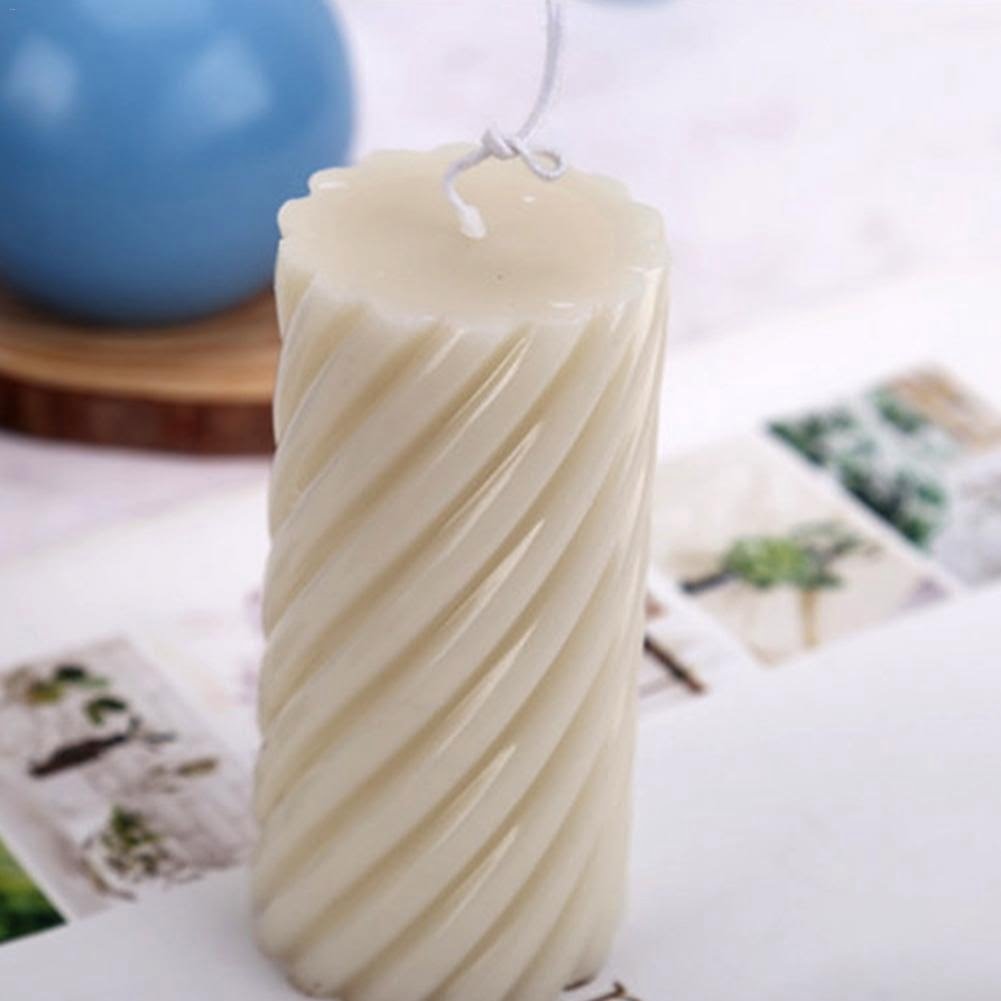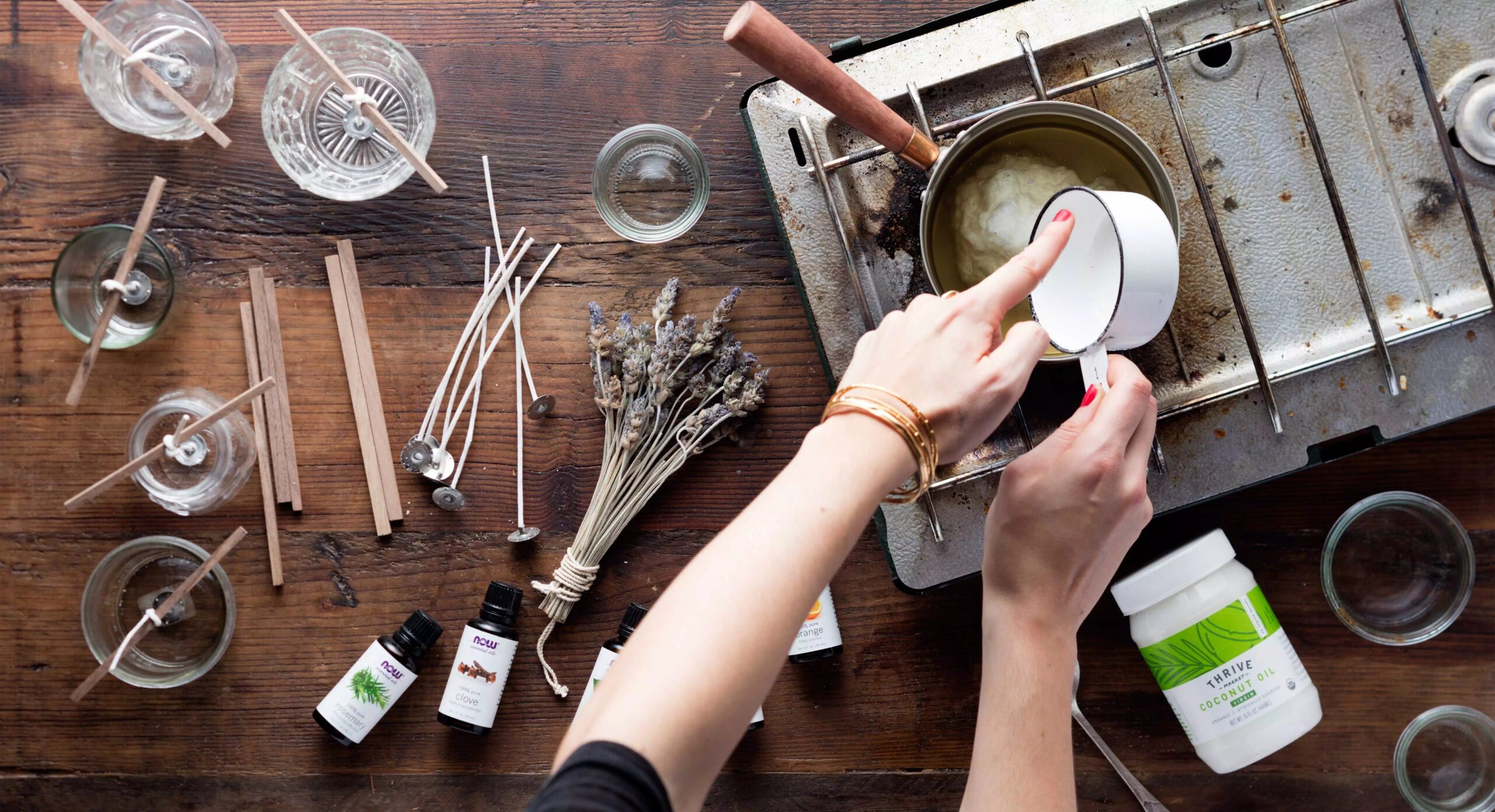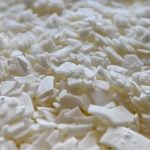Introduction
Making beeswax candles requires the selection of a wick. The wick is the element that helps power the flame when burning the beeswax and provides oxygen to guide its journey so that it burns looking and smelling as intended. Selecting a wick then, is essential in creating an optimal candle experience.
In order to choose the right wick for beeswax candles, there are certain key factors to consider. Firstly, it’s important to be aware of any additives or fragrances that may be present in your recipe; certain ingredients may require different sizes of wicks in order to ensure optimal burning. Secondly, the size and shape of the wax container must also be taken into account; some containers with narrower openings may benefit from using longer wicks that burn slowly and steadily over time, while others with wider mouths can handle shorter versions. Finally, understanding how much wax has been used in each container is another area where careful consideration should be taken since different amounts will also affect what type of candlewicking should be employed for successful results.
Once these elements have been considered, the next step involves testing various types of wicks against each other to see which yields better results. This testing process can involve anything from comparing minimum length requirements for proper combustion all the way through to observing temperature readings at different points throughout its burning process. Of course, this part can also include taking note of any smoke emissions or wax pooling behaviour when lit ” both indicators as to whether or not a given type could potentially hold up during prolonged usage and repetetive lighting over time. By analyzing this data, one can then experiment with various types and sizes until they find one that produces their desired results and meets their preferences regarding aesthetics along with safety considerations required by applicable regulations.
Different Types of Candle Wicks Explained and How They Differ
When it comes to choosing the right wicks for making beeswax candles, there are a few important factors to consider. The type of wick used in a candle will determine not only the amount of fragrance and melted wax that reaches the flame, but also its size and burn rate. There are several different types of wicks available for use in beeswax candles, and the selection will depend on individual preferences.
Two popular types of wicks used in beeswax candles are flat and round braided wicks. Flat braided wicks provide a larger burn surface than round ones and allow more wax to reach the flame, meaning they produce a brighter flame. Round braided wicks provide smaller burning surfaces with higher temperature points which results in less melted wax reaching the flame but still provides long and even burning times.
For those looking to make their beeswax candles extra special, coreless or hollow-core wicks can be utilized as they can offer larger burns with intense flames while still limiting dripping from the melted wax of your candIes. Another option is zinc or metallic core lead-free embeddable cotton-based twin-heart wicks that have been designed for large container sizes; these create bright blue flames when lit providing an attractive feature for any room. Finally, you could choose natural kapok fibers for a longer lasting flame life but with more controlled burn speeds.
No matter which type you choose for your beeswax candle project, it’s important that you ignite them using appropriate tinder like lighters or matches so that you won’t experience any issues once your candles start to burn. You should also make sure that you never leave a burning candle unattended and always make sure that they are placed away from materials or items which could catch fire easily such as drapery or fabrics.
Factors to Consider When Choosing Wicks
The type of wick used in making beeswax candles has a big impact on the quality of the finished product. When selecting wicks, several factors should be taken into consideration. The primary factor to consider is the size of the candle you plan to make and its container. Wicks that are too long for either the candle or the container can lead to misshapen candles and smoke residue. Additionally, thin wicks are better suited for votives and other smaller candles while thicker wicks are ideal for larger containers. For maximum burn time, choose a wick designed for cooling waxes such as soy wax and beeswax ” these will usually produce a longer lasting flame with less soot than those designed for paraffin based waxes. Lastly, when choosing cotton versus pre-coated hemp core/cotton blend wicks, bare cotton require more maintenance as they need to be trimmed often; pre-coated blends usually stay in optimal condition until their burn cycle is complete.
How to Determine the Correct Wick Size for Your Candles
Properly choosing the right size wick for your beeswax candles is important for ensuring that your candles burn clean and last as long as possible. To determine the optimal size of wick, you should consider factors such as the type of wax used in the candle, container size, shape of the candle, and how often it’s used.
The most common types of wax used to make beeswax candles are paraffin, soy, or a blend of both. Each type has different melting points and burns at different rates; therefore, you’ll want to select a wick that corresponds with your chosen wax. If you’re using a standard container-style candle or an old-fashioned pillar candle, then a flat-braided wick is usually ideal. The thickness of the braid will depend on the diameter of your container; for instance, if your candle has a 2-inch diameter base then you’ll want to use a 5/0 (five “0”) flat braid wick. For more complex shaped candles like votives or tapers, try using two parallel cotton threads instead as they don’t require cutting while burning.
Additionally, if your candle is larger or often used frequently, then it will require a longer burning time and accordingly will need an increased diameter of wick to handle continued burning properly. You can refer to a manufacturer’s guide to better understand which sizes of wicks corresponds with certain styles and sizes of candles.. It’s also recommended that each time you purchase new wax that you test out multiple wicks with your chosen wax blend in order to find the best one for your needs. And finally another way you can check if your chosen Wick is suitable is by lighting it once without any wax present – this should tell you immediately if it’s too thick or too thin!
How To Use a Wick Chart to Determine Wick Length
When making beeswax candles you will want to determine the proper length for your wick in order to ensure the candle burns safely and effectively. To do this you can use a wick chart.
To start, you will want to measure the diameter of your finished beeswax candle and look up that measurement on the chart. This will give you an indication of the best size and type of wick to use, such as cotton or zinc core wicks. Once you’ve determined which type of wick is suited to your candle, check the corresponding column that has a “+/-” value attached to it- this column indicates how much greater or lesser than the recommended width of your candle the length of your wick should be. For example, if a certain size of beeswax candle typically uses a 4″ long cotton core wick according to the chart, but there is a “+1” listed next to it, then instead of just 4″ you should use 5″ for best results. This extra 1” provides heat resistance in order for the wax pool on top of your candle’s flame to remain in place before melting away completely without spilling over onto your table or countertop.
Remember: Properly using a wick chart can help ensure that your beeswax candles are safe and burn efficiently without any problems!
Steps for Preparing Your Candle Wicks for Burning
1. Measure the diameter of your beeswax candles. This is important for choosing the correct size of wick for proper burning and scent diffusion.
2. Purchase cotton or linen wicking in either braided or twisted styles, often referred to as “square braid” or “cotton core”. Wick length should be about twice the height and circumference of your candle container.
3. Prime the wicks by treating them with a special paste made from heated beeswax and boiled linseed oil in a 1:4 ratio respectively. This paste prepares the wicks so they can properly absorb wax while being held straight during pouring into wax molds, while promoting even burning without choking on smoke when lit.
4. Once coated in the primer, hang your treated cords over sticks placed across two chairs in a room with good air circulation so any remaining moisture will evaporate fully allowing them to become completely dry before use.
5. When ready to use, thread the primed wick through a large needle or bodkin, anchor it at the bottom of your candle container making sure enough wick extends beyond the mold’s circumference firmly tied upside down around a dowel. Take care not to stretch it too tightly as you thread it through so your candles won’t burn unevenly when later lit, since an overly-tightened wick would apply too much heat and cause smoking rather than clean burning of your candle’s mynt aroma as desired..
Recommended Suppliers for Quality Candle Wicks
When making beeswax candles, selecting the right wick is key to ensuring that your candles burn properly and safely. Without a good quality wick, not only will your candles be difficult to light but also could cause them to burn too quickly and may even emit black smoke. Many factors go into deciding which wick is best for beeswax: the size of the container, the circumference, and the diameter are all important considerations.
When looking for quality candle wicks, it is recommended to use suppliers who specialize in their production because they will have a variety of sizes and types specifically designed for different types of waxes such as beeswax. When picking out a wick, take into account its size in relation to the candle diameter as well as its material construction. For example, professional grade paper/cotton core braided cotton/paper blends tend to work better with beeswax than regular flat or round paper cores do because they hold their shape better. Be sure to double-check that whatever supplier you purchase from has been tested for clean burning and optimal performance”these standards are often referred to as ‘preferred burning requirements’ (PBR). Quality candle supply companies should also be able to provide detailed instructions about properly preparing your wicks for use depending on your chosen melting temperature so you can achieve excellent results when pouring your candles.
Conclusion
When it comes to making the perfect beeswax candle, selecting the right wick is essential. The right wick will ensure that the candle burns evenly and doesn’t produce too much smoke or soot. This not only creates a more pleasant atmosphere but also aids in preserving the quality of the beeswax. Natural-fiber wicks, such as cotton or hemp, work best for beeswax candles as they burn at a lower temperature than other types of wicks, helping to prevent overheating of the wax. Beeswax candles also tend to have a higher melting point than other types of wax, which is why under-sized wicks can burn too quickly and cause tunneling (creating channels along the surface). It’s important to choose the appropriate wick size for each size candle container in order to achieve the longest possible burn time. Additionally, trimming off excess blackened material from lit wicks can help improve its flame size and enhance candle performance. In short, taking care when selecting and caring for an appropriate wick type makes setting up your beeswax candles a successful process. As long as you use careful consideration and pay attention to how your candle performs while burning, you should be able to attain optimal results when it comes to producing beautiful high-quality candles with natural wax.

Welcome to my candle making blog! In this blog, I will be sharing my tips and tricks for making candles. I will also be sharing some of my favorite recipes.





